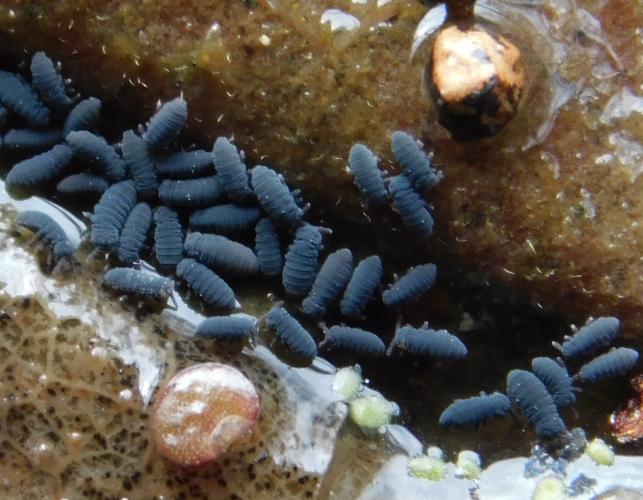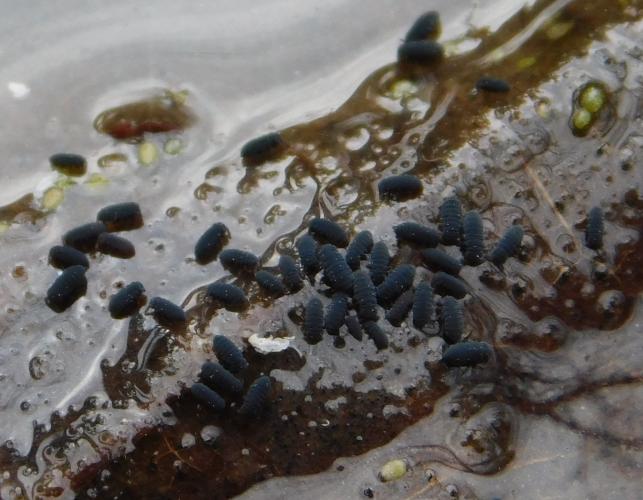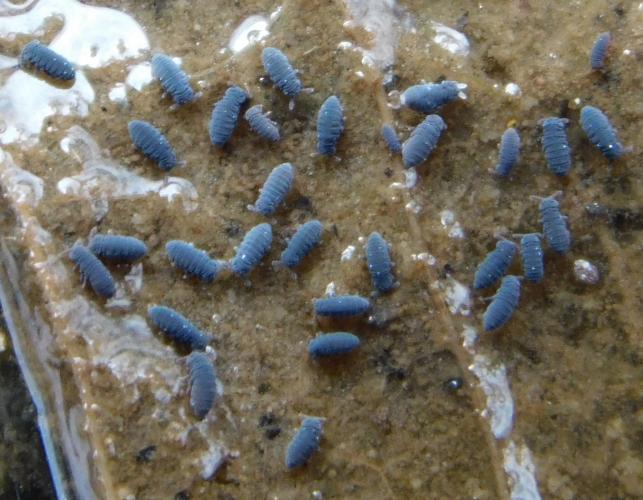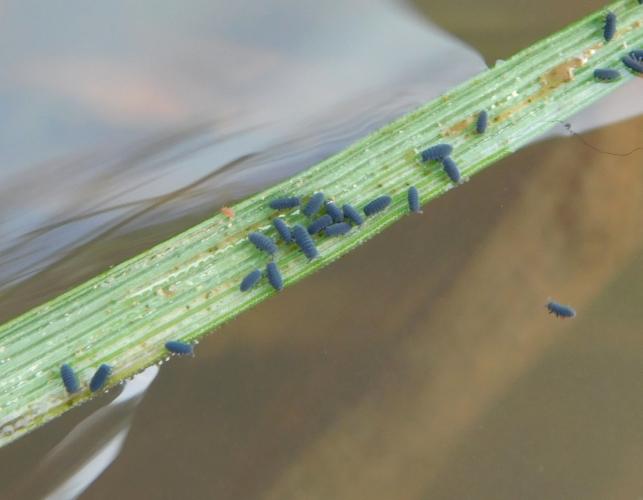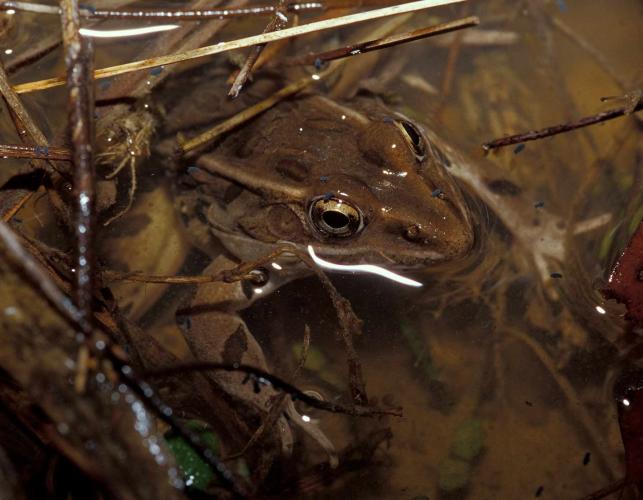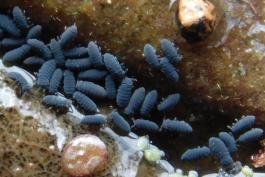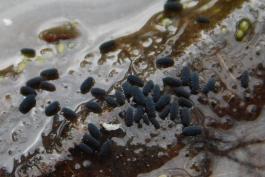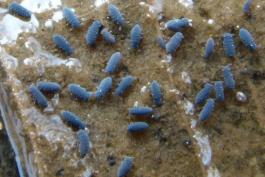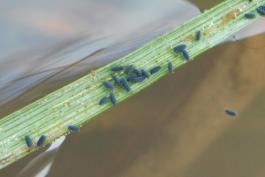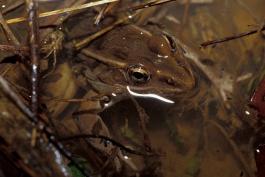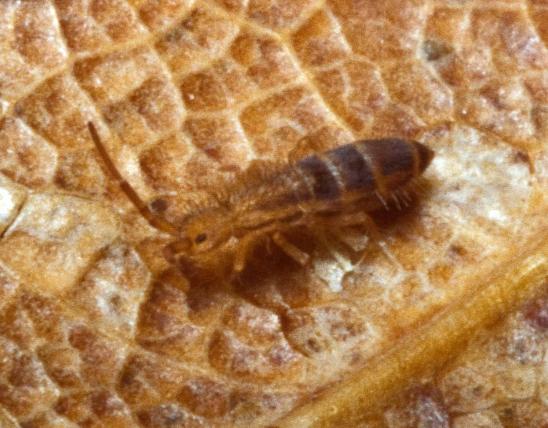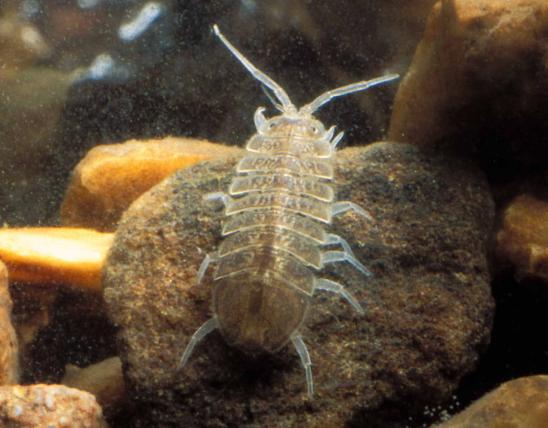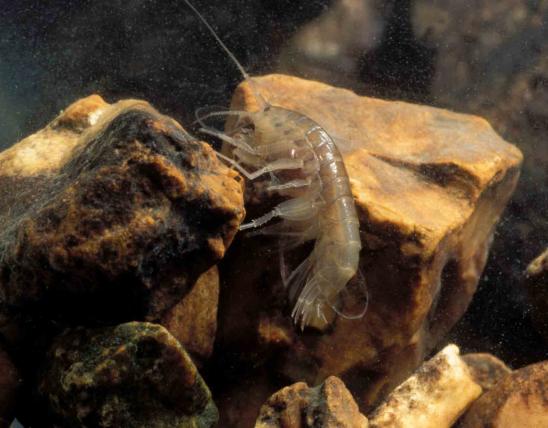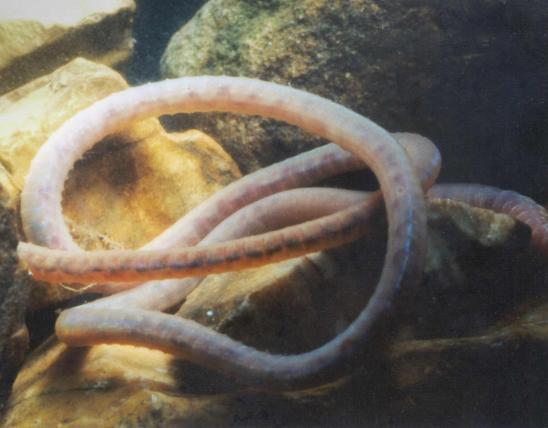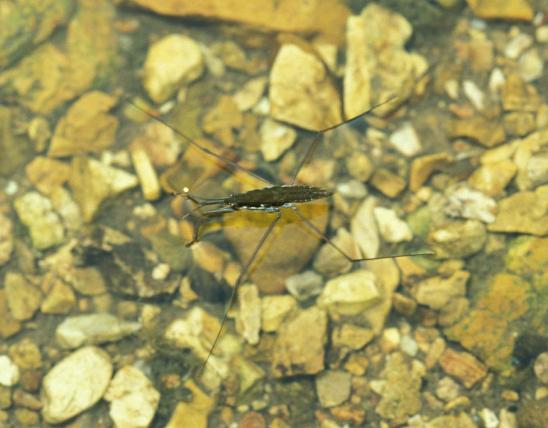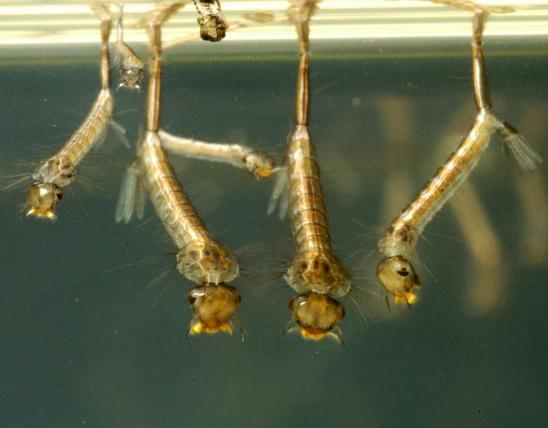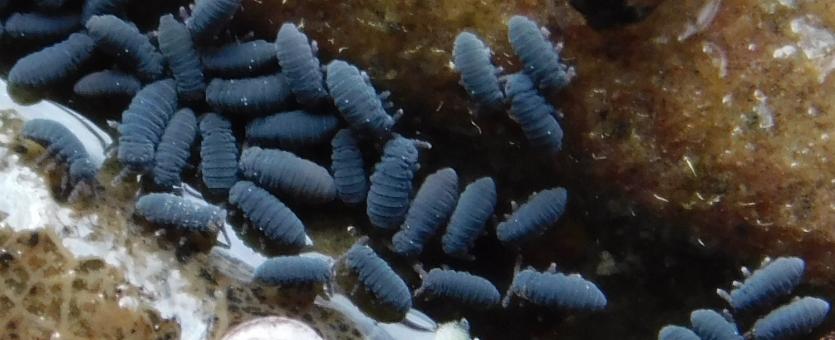
Water springtails have six legs, lack wings, and, like most other springtails, can spring (jump) using a forked tail-like structure (furcula) attached to abdomen segments 4 or 5. The furcula is usually held folded under the abdomen, and a latch (tenaculum) holds it in place. When the tenaculum is released, the furcula straightens suddenly, flipping the animal upward.
Adults of this species are bluish gray, often with reddish appendages. The two forks of the furcula are very long. Often, the empty, white, shedded skins float on the water nearby. Juveniles are orange or have an orange cast.
Similar species: Many other species of springtails exist, and many of them are semiaquatic. The deeply forked furcula is a key identifier for this species. Snow fleas (Hypogastrura nivicola and H. harveyi) look fairly similar. Thousands of them can form sizeable patches on the surface of snow. They sometimes accumulate in foot tracks and other indentations in the snow surface, making the low areas appear black.
Length: adults can reach about 1/8 inch (2.5 mm); juveniles are smaller.
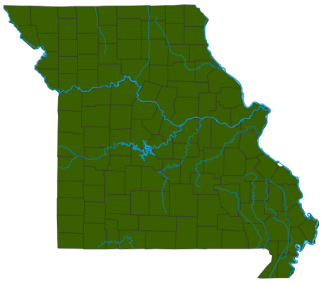
Statewide. This species occurs throughout the northern hemisphere.
Habitat and Conservation
Water springtails are semiaquatic, living on the surface of ponds, in quiet edges and sluggish places of streams, and other slow-moving water. Like water striders, they can “walk on water” because the water’s surface tension upholds their small, lightweight bodies. When they spring up and then land a few feet away in the water, their bodies scarcely dimple the surface. The surface of their bodies repels water.
Food
Springtails, in general, eat decaying organic materials, especially decomposing plants, as well as fungal foods such as molds and mildews. Some species eat decomposing animals, dung, bacteria, or pollen, and some are predatory. This species probably eats decaying aquatic materials.
Status
Taxonomy: For a long time, springtails were considered to be insects, and classified as an order within class Insecta. And why not? Like insects, they have six legs (they are “hexapods”), and they look a lot like insects. But springtails have several traits that have convinced biologists they have a separate lineage and belong in their own class, Collembola. Springtails are often called “non-insect hexapods.”
Life Cycle
Springtails hatch from eggs and undergo a number of immature stages, shedding their skin several times as they grow. Each stage looks more or less like the others, except that juvenile springtails are smaller and usually lighter colored than adults — in this species, the young ones are orangish. This species apparently overwinters by hibernating underwater, then emerging to the surface in early spring.
Human Connections
Springtails are decomposers that, along with fungi and bacteria, break down the mountains of dead leaves, sticks, trees, and other organic materials that fall to the ground and into the water every year, and turn it all into beautiful, rich, healthy soil and clean water.
As a component of healthy aquatic ecosystems, water springtails contribute to the excellent fisheries our state provides. Plus they’re pretty interesting to watch.
Ecosystem Connections
Springtails perform a huge service ecologically by decomposing dead vegetation and other organic materials, converting it into fertile soil and clean water.
Water springtails are eaten by a variety of small predators, such small flies, bugs, beetles, small or immature spiders, larval fish, frogs, salamanders, and more.
Water springtails have the ability to detect polarized light. This adaptation probably helps them navigate, since it would help them know which direction sunbeams are streaming and reflecting off water. For aquatic springtails such as this species, this can help them move toward their preferred environment. Researchers have found that water springtails indeed move toward horizontally polarized light. Several aquatic insects (unrelated to springtails) apparently have this ability, too.
